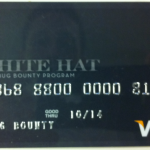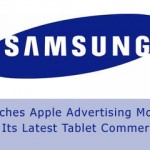 Mountain View, California — In a fresh move that depicts simplicity with uniqueness, global search engine titan Google has begun experimenting with a biggest new design to date for its venerable home page, reducing its recently-added grey menu along the top of the page to a grey logo at the upper left, and it looks a lot like Chrome.
Mountain View, California — In a fresh move that depicts simplicity with uniqueness, global search engine titan Google has begun experimenting with a biggest new design to date for its venerable home page, reducing its recently-added grey menu along the top of the page to a grey logo at the upper left, and it looks a lot like Chrome.
The revamp cleans out its front page of the black bar that currently runs horizontally along its top, and replaces it with a grey logo. Now the moment one loads a www.Google.com page, one is greeted with the Google bar floating on the top with a Gmail sign-in option on the top right hand corner and a Google apps/services drop down menu on the top left corner.
{japopup type=”iframe” content=”images/stories/demo/2012/jan/google new look-big.png” width=”1024″ height=”600″} {/japopup}
{/japopup}
{japopup type=”iframe” content=”images/stories/demo/2012/jan/google new look-big.png” width=”1024″ height=”600″}Click to enlarge…{/japopup}
The remake is designed to promote the firm’s other services. For instance, the pull-down menu offers access to Google+, Gmail, YouTube and other services. Analysts say the move is being implemented to introduce icons to the site without resembling Yahoo’s layout.
“They are trying to deal with how to service all the different categories of Google properties without making the page cluttered, because Google is always very keen to hang onto the plain minimalist front page that they have always had,” Davies Murphy Group’s Chris Green told BBC News.
Besides, the new design delivers access to Google’s numerous services that were previously under-wraps from the home page, while putting the Google+ social media networking service in a can’t-miss position on Google’s home page. That is pretty prominent placement: last week, Nielsen declared Google was the most-visited Web site in the United States during 2011.
When users click the logo, a fly-out menu reveals Google’s usual space of seven top services (Google+, Search, Images, Maps, YouTube, News, Gmail, and Documents) and clicking on the “More” option further reveals a fly out an hierarchical submenu with access to things like Reader, Calendar, Books, and Shopping. Each service is tagged with its own icon for easier visual identification.
“The other thing that they are attempting to do with those menus is making the page look like their Chrome netbook operating system. So whether you are using a Chromebook or the Google website the interface is the same,” Green added.
However, the new design is not yet available to all Google users, but seems to be selectively available to some users in English-language markets.


